Working toward a safer Blue Line
August 29, 2013
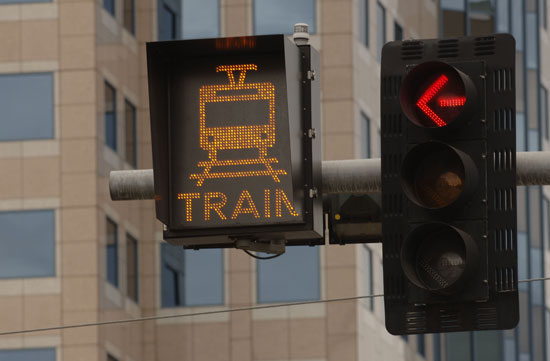
LED signs like this one in Long Beach alert pedestrians to stay off the tracks when a train is coming. Photos/Metro
One year after a task force convened to improve safety on Los Angeles Metro’s Blue Line, newly-released figures show that, while progress is being made, the line remains the deadliest in the system.
Abdul Zohbi, a system safety manager who organized the task force, says every fatality is reason for concern, but that he’s not ready to panic.
“All of our safety projects are being worked on as we speak,” Zohbi said.
Last July, officials discovered a spike in fatalities on the 22-mile light rail line from Downtown Los Angeles to Long Beach. It was on pace to experience the highest number of accidental fatalities and suicides of any year since it opened in 1990.
Acting on a motion by Supervisor Zev Yaroslavsky, Metro’s Board of Directors approved the creation of a Blue Line Task Force to find solutions for the agency’s oldest rail line.
“With our new lines, we are installing state-of-the-art devices that have come into existence in the past 20 years,” said Vijay Khawani, Metro’s executive officer of corporate safety. “A year ago we said, ‘Wait a minute, why can’t we retrofit the Blue Line?’”
Zohbi reached out to the City of Los Angeles’ Department of Transportation, the California Public Utilities Commission and Union Pacific Railroad, which runs a freight line directly alongside the Blue Line. He also invited representatives from Didi Hirsch Mental Health Services, a Culver City nonprofit organization that operates a 24-hour suicide crisis hotline.
The resulting recommendations were approved by the Board last December, and included $7.7 million for such physical improvements as pedestrian gates, bright LED signs and audible warning bell devices, although it has taken time for the measures to work their way through the bureacracy. Additional training is underway for light rail vehicle operators, including 2 days walking the line to experience the environment as pedestrians. And educational outreach to communities, another major part of the new safety program, has begun as well. “We expect the public to do their part in heeding the signs,” Zohbi said.
The outreach and training have already begun, and most of the physical improvements like the new LED signage are expected to be finished by around June of next year. But the improvements Zohbi believes will be most effective—108 new pedestrian gates—must be contracted out competitively, which will take longer.
In the meantime, safety issues continue to plague the Blue Line. According to statistics released Monday, it experienced more accidents and fatalities than all other Metro lines combined since the beginning of 2012, accounting for 56 of 77 accidents involving trains and pedestrians or cars during the period, along with 12 of 14 total fatalities.
“We need a physical barrier to stop people trying to cross the tracks illegally,” Zohbi said. “The No. 1 cause of accidental fatalities on the Blue Line is pedestrians running to catch a train. When you’re trying to save 30 seconds, you could lose your life.”
Tragically, even more deaths are intentional—half of the fatalities in 2012 and 75 percent of deaths so far this year were suicides. The task force called for suicide prevention signs with Didi Hirsch’s 24-hour hotline number to be installed at stations and other key locations. Those signs are 90 percent installed along the Blue Line. When that job is finished, they’ll be installed on the rest of the rail system.
Lyn Morris, who represented Didi Hirsch on the task force, said the signs represent “a big step ahead” by Metro.
“It wasn’t always popular to put the word ‘suicide’ on signs,” Morris said. “People like to talk around it, but when you are talking to someone who is suicidal you need to address it directly.”
The signs have only been in place for a couple of months, but Morris said her agency has already fielded calls generated by them, including some from people in a state of crisis. But beside that point-of-contact intervention, she said the signs serve a much broader purpose—spreading the word to communities across the county that someone is out there to listen and help at the most seemingly-hopeless times.
Both Morris and Bruce Shelburne, Metro’s rail operations chief, admitted that it’s next to impossible to eliminate all accidents resulting from people who break the law or attempt suicide.
“We are eating an elephant one bite at a time,” Shelburne said. “It’s a fine line—the safest train is one that doesn’t run at all.”
The Blue Line faces unique challenges. For one, it is Metro’s oldest rail line; the Teenage Mutant Ninja Turtles were used to promote its June, 1990, opening. And it runs through a densely populated part of town, with 103 at-grade crossings with other streets. Over the first 12 years of the line’s operation, it experienced more fatalities than any other line in the nation. In 1999, after a particularly rough year, Metro added safety measures that cut deaths by nearly half during the next decade.
While behavior of pedestrians and vehicular traffic can’t be predicted to a certainty, Zohbi called all fatalities “unnecessary.”
“To bring the fatalities down to zero,” he said, “that is our optimal goal.”
Posted 8/29/13
Summer crimes hit LA’s promenades
August 7, 2013
The news of last weekend’s tragedy on the Venice boardwalk had scarcely broken when Finbar O’Hanlon began fielding the inevitable calls.
“I’m from Australia,” says O’Hanlon, a tech entrepreneur and musician who relocated eight months ago to Venice, “and my friends from overseas were all, ‘Come home! It’s not safe! What are you doing, living there?’ “
Across town, on Hollywood Boulevard, Silvia Figueroa is hearing a similar message. In June, a troubled panhandler stabbed a young woman to death on the Walk of Fame, a few feet from where Figueroa hawks bus tours of homes of the stars. Since then, she says, her mom in Echo Park hasn’t stopped calling—and it didn’t help when a so-called “bash mob” tore down the boulevard in July, randomly robbing people.
“She keeps telling me it’s not safe,” says Figueroa, who, at 23, is the same age as the stabbing victim. “She doesn’t want me to work in Hollywood anymore.”
It’s been an unsettling summer in Los Angeles’ tourist hotspots, with three high-profile violent incidents—the stabbing, the hit-and-run and the “bash mob” robbery spree—in two of L.A.’s most famous promenades.
Not so unsettling that the tourists have stopped coming—visitors from around the world jammed the Walk of Fame this week as usual, interspersed with the inevitable hustlers in Star Wars and Mickey Mouse costumes. And Venice’s beach carnival atmosphere was back within 24 hours after a transient plowed a 2008 Dodge Avenger onto the boardwalk Saturday, veering around traffic barriers to kill a 32-year-old Italian honeymooner and injure 16 others.
But the incidents have been worrisome enough to incite calls this week for improved security measures.
On Tuesday, the Los Angeles City Council voted to augment existing traffic barriers by temporarily blocking more of the nearly 30 streets and alleys on which cars can reach the boardwalk, and to study the possibility of more permanent barriers. Meanwhile, in Hollywood this week, local business representatives plan to present a set of recommendations to Mayor Eric Garcetti aimed at making the Walk of Fame and surrounding area safer.
The list, drawn up by Hollywood’s business improvement districts and Chamber of Commerce, asks, among other things, that the city’s aggressive panhandling ordinance be reviewed and tightened, that sidewalk CD vendors and tour operators be banned from Hollywood Boulevard and that street performers around Hollywood and Highland be required to register with the city, kept to a designated limit and banned from wearing masks.
Los Angeles Police Commander Andrew J. Smith says the demands are understandable, given the crimes’ shocking nature. But, he says, the incidents are anomalies in areas that already have extensive security. The LAPD, he says, has had 20 to 40 extra officers deployed in Hollywood since the June stabbing, “on bikes, cars, foot and horseback”, and deployment is “already robust” in Venice.
“Crime is down across the board in Los Angeles,” Smith notes. “And both Hollywood and Venice are extraordinarily safe, especially compared to the crime rates of ten or 15 years ago. But when something like this happens that gets attention, it gives a false impression.”
That attention worries Stuart Sarbone, 73, a retired businessman who lives so close to the boardwalk that he heard the Venice crash on Saturday from inside his home. Sarbone notes that both the Hollywood stabbing and the hit-and-run down the block from his home appear to have been committed by unstable men.
Nathan Louis Campbell, the 38-year-old Colorado transient arrested after Saturday’s incident, reportedly had a history of substance abuse, and 26-year-old Dustin James Kinnear, charged with killing Christine Calderon on the Walk of Fame, was said to have been in and out of mental health treatment since childhood.
Kinnear has pleaded not guilty to charges of murder. Campbell pleaded not guilty this week to one count of murder, 16 counts of assault with a deadly weapon and 17 counts of hit and run. His lawyer said that he is “profoundly depressed that he has potentially ended someone’s life”, and called the crash “a horrible accident.”
Sarbone says the incidents point to a need for improved mental health care and an examination of L.A.’s safety net.
“There’s a lot of crazy things going on now because people are under terrible, terrible stress,” he says, watching a TV truck set up a camera near a boardwalk shrine to Alice Gruppioni, the Italian woman who died in the Saturday crash. “They have no jobs. They have no money. They get desperate.”
O’Hanlon, the Australian transplant, sees the incident as a tragic-but-rare occurrence, outweighed by Venice’s bohemian excitement. “I could live anywhere in the world,” he says, “and I choose to stay here.”
For many veteran Venetians, however, the incident was a tragic reminder of the vulnerability that comes with living in a community in a tourist destination.
“This isn’t supposed to happen here,” said resident Rachel Shapiro, stopping during her morning walk at the boardwalk shrine with its flowers and candles. “Sixteen million people a year—people from all over the world—come down to this boardwalk. Nobody comes here to die.”
Posted 8/7/13
New law serves up a cottage industry
July 18, 2013
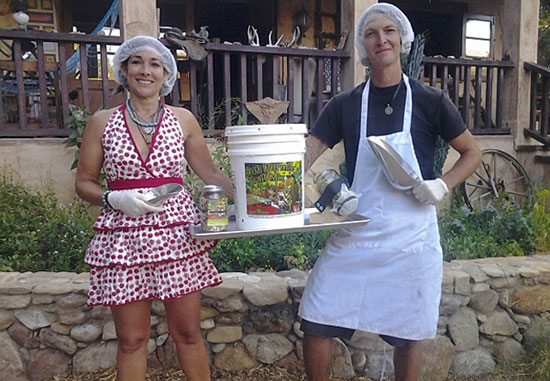
Lisa Cianci and Ben Lawson of Ant Permie's are among hundreds taking advantage of the Homemade Food Act.
Gene Holmon’s spice mix was so good that his Woodland Hills family urged him to sell it. Jessica Schnyder learned to make jam and pickles from her Hollywood chef friend, Amanda Carr.
Kyle and Liz von Hasseln, grads of Southern California Institute of Architecture, were playing with a three-dimensional printer one day when they realized they could make sugar sculptures. Shantal Derboghosian, a Van Nuys engineer, was unemployed when she discovered a gift for baking. Ben Lawson perfected his organic, sustainable trail mix in Topanga when he wasn’t drumming for a Long Beach punk/grind-crust band.
Until about six months ago, few, if any, of them could have profited much from their passions. But today, they and hundreds of others are part of an entrepreneurial boomlet ignited by a new state law allowing Californians to make food for sale from their home kitchens.
The California Homemade Food Act, which created a new category of food production called “cottage food operation,” has been in effect since January and, according to health officials, few places have seized on it with the excitement of Los Angeles County.
Spurred by L.A.’s creative culture and California’s artisanal food movement, a home-based underground of bread makers, cookie bakers, coffee roasters, marshmallow puffers, marmalade canners, baklava peddlers and just about every other imaginable kind of food purveyor has come out from behind the stove to pull permits.
“Our numbers are very high compared to other jurisdictions,” says Director of Environmental Health Angelo Bellomo, who notes that, so far, more than 500 applications have been filed with the county for permission to prepare and sell non-perishable food products at home rather than in expensive leased space in certified commercial kitchens.
Of those, he says, about 200 have been approved; most of the rest are awaiting payment of annual fees ranging from $103 to $254, depending on whether the business is direct sale only or includes sales through restaurants and markets. (Click here and here for the most recent list of permit holders.)
“There’s been a lot of interest on the part of those who have always dreamed of having a home enterprise.”
The development is no surprise to Mark Stambler, a Los Feliz artisan baker whose naturally leavened organic French bread sparked the state law in 2011 after it started flying off the shelves in local cheese shops and restaurants.
“I was selling a good number of loaves each week, and as long as I kept my head down, no one was the wiser,” says Stambler, whose bread was baked in his backyard in a wood-fired stone oven.
But over time, his bread became the talk of foodie L.A., and the Los Angeles Times ran a story, telling readers where they could find it. Within 24 hours, he says, county health inspectors descended on the shop where his goods were being sold and informed customers that it was illegal to sell food that hadn’t been prepared in a commercial kitchen.
Stambler responded with an 18-month crusade to open the system, with the help of his local state legislator, Assemblyman Mike Gatto (D-Silver Lake). The new law applies only to “non-potentially hazardous food” such as bread, preserves, dried foods and other goods whose ingredients don’t include meat, cream or other perishable items. It requires home food producers to complete a course in food processing and the labeling of their products. Those who want to sell their wares in bakeries, markets and restaurants also must undergo a kitchen inspection.
But even with the law’s limitations, the activist baker—who says he lost two-thirds of his business after the county crackdown—says he’s been thanked repeatedly for pushing the changes.
“I’ve heard from people all over the state, saying they really needed this for the added income,” he says.
The cottage food option was certainly helpful for Shantal Derboghosian, who coped with a spell of joblessness by opening Shakar Bakery out of her one-bedroom apartment in Van Nuys. Specializing in custom cakes (her business name is Armenian for “sugar”), the 31-year-old environmental engineer found herself spending six to eight hours on her creations—a labor of love if it’s in your own kitchen, but a hefty bite out of your bottom line if you have to pay an hourly rate for a commercial workspace.
“I was renting kitchen space,” she says, “but they were charging about $25 an hour and it was expensive. My first official client was a three-tier baptism cake for 150 people, with a lot of sculpting—it was a nautical thing, with whales and waves and little anchors.”
Her current project is a 5-foot-tall, flashing tribute cake modeled on the French techno-music duo Daft Punk that she created with the help of Garen Khanoyan, a fellow engineer whose day job is at the Jet Propulsion Laboratory. “These things aren’t quick to do,” she notes.
Neither is building a business, Kyle and Liz von Hasseln say, noting that the new rules have bought them crucial time to scale their custom sugar sculpting business, The Sugar Lab.
The couple says their concept was born in 2010, when they were architecture students at the Southern California Institute of Architecture downtown and a friend announced it was her birthday. “Our thesis at SCI-Arc was on new developments and free-form fabrication, which is the catchall phrase for 3-D printing,” says Kyle von Hasseln. “We were living in a teeny little apartment in Echo Park and we didn’t have an oven. So we decided to try to 3-D print her a sugar cake topper for her birthday cake.”
The idea took months of trial-and-error, he says, but eventually it yielded an extraordinary manufactured sugar sculpture that has since led to a series of custom assignments for birthday parties and weddings in collaboration with a local bakery. Their latest project? A stunning 3-D sugar diamond, done on spec for GLAAD, celebrating the U.S. Supreme Court’s same-sex marriage decision.
“We could invest in commercial kitchen space, but it would be hard for young entrepreneurs just out of grad school with a lot of debt,” he says.
For many artisans, however, the cottage food permits are simply a chance, at last, to see whether their ideas have a market.
“We love food and want to have our own business,” says Schnyder, a 26-year-old Mar Vista restaurant manager who has teamed with her 29-year-old friend Carr to launch Calliope Canned Commodities, a sideline she says expresses their enthusiasm for jams, pickles and Victorian circus musical instruments.
“What we make requires such a slow process and such small batches that you don’t need a lot of space to do it, Schnyder says. “But until now, we haven’t been able to sell it. We’ve just given it away to our friends.”
For Lawson, the drummer, the cottage food program has been a way to market not only his Ant Permie’s trail mix but also his belief in sustainability, local trade and emergency preparedness.
“We all know of local cafes that serve, you know, brownies that some old lady made in an apartment that are so good that nobody drops a dime on them,” he says. “Now that kind of thing can be legal.”
His signature organic snack is made at Cross Bull Ranch, the permaculture collective and retreat where he lives in Topanga, and is sold in airtight, rodent-proof, 5-gallon buckets that, depending on storage conditions, can keep food fresh “for months to years.”
As for Gene “Cappy” Holmon and his wife Paulette, the law has provided an answer both to those who have clamored over the years for his secret Cappy’s Dry Rub spice mix and to the retired couple’s own prayers.
“We had played with the idea for years,” says Paulette, a former costume designer. “Then this law passed, and the Heavenly Father just told us one day, ‘You guys should do something with it’.”
“Everybody seems to like it,” marvels Gene, a 66-year-old disabled veteran and retired small business owner. “Hey, we don’t play golf, so we’ve got to do something, right?”
Posted 7/18/13
Next stop? A milestone in public art
April 11, 2013
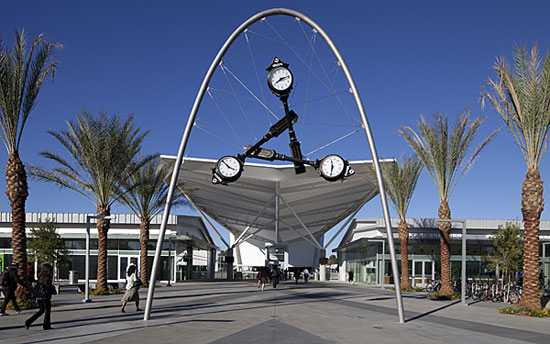
Donald Lipski's "Time Piece," part of Metro's signature art collection, greets bus travelers at the El Monte station.
As art collections go, it’s impressive, from famed sculptor Jonathan Borofsky to activist/artist Judy Baca to renowned Eastside painter Frank Romero.
The catch? You have to be traveling to see it. Oh, and a lot of it is literally underground.
The sprawling exhibition of public art that Metro has built in L.A. County’s subway, bus and commuter rail stations will celebrate its 25th anniversary next year. (Take a virtual tour in our gallery below.)
Launched in 1989 with a half-percent set-aside from rail construction costs, Metro’s award-winning collection of public transit art now encompasses work by some 120 artists in 100 stations, plus posters, photography, poetry and other temporary installations by another 180 artists. Last week, eight California artists were selected to create work for the second phase of the Expo Line, which will run to Santa Monica from the end of the first segment at Culver City.
“Art brings a unique vibrancy and vitality to L.A.’s Metro system,” says Maya Emsden, deputy executive officer for creative services at Metro, who is one of a handful of co-authors on a forthcoming American Public Transportation Association “best practices” paper on integrating art into public transit.
“Art was an integral part of the Metro rail planning process from the very start.”
Metro’s collection kicked off in 1990 with a now-highly-collectible poster by Romero to commemorate the opening of the first Metro rail line. That inaugural artwork, which depicts an old Red Car morphing into the Blue Line as classic cars, blimps and airplanes whiz around it, was followed the next year by “Unity,” a glowing, blue-and-white permanent installation of 82 fiber-optic light panels in the subway tunnel between the Metro Center and Pico Stations by Thomas Eatherton, an artist from Santa Monica.
That piece led in 1993 to a series of now-iconic permanent artworks: Borofsky’s “I Dreamed I Could Fly,” a collection of life-size fiberglass figures suspended from the ceiling of the Civic Center station; Terry Schoonhoven’s Union Station mural of “time-scapes” from Spanish galleons to Carole Lombard, sitting on a suitcase; Joyce Kozloff’s ceramic tile “film strip” murals in the 7th Street/Metro Center station; Stephen Antonakos’ hanging neon artworks at the station below Pershing Square.
Since then, the program has expanded with L.A.’s transit system, says Emsden; the new commissions for Phase 2 of the new Expo Line were selected from some 400 submittals and include such artists as Shizu Saldamando, Abel Alejandre, Susan Logoreci, Nzuji de Magalhaes, Constance Mallinson, Carmen Argote, Judithe Hernandez and Walter Hood.
Though the half-percent of construction costs that L.A. reserves is substantially smaller than transit art set-asides in Boston, New York, Portland, and most other cities with such programs, Metro has been able to stretch its allotment by integrating the artworks as much as possible into the station construction.
“One of the ways we’re able to maximize the limited budget is through early involvement in the project,” says Emsden. “This also ensures important art-related things like lighting are integrated into the station plans.”
The added efficiency of building art into a station, as opposed to going back later and retrofitting, is just one of a number of art lessons Metro has learned in the past 24-plus years. Art program staffers have learned to work closely with architects, engineers and maintenance staff to situate pieces so that maintenance of the art is taken into consideration—a matter that can be trickier in, say, a rail station than in a museum.
“The Borofsky piece, ‘I Dreamed I Could Fly’, is one of my absolute favorites,” says Emsden. “But if we were to do it again we’d make sure the figures, which are actually self-portraits of the artist, were hung in a way that we could lower them for cleaning.” The flying fiberglass figures—like everything else in the stations—get covered over time with magnetic steel transit dust that can only be removed with specialized equipment and cleansers, says Emsden.
“So every five years or so, we get up there and clean them between 2 a.m. and 4 a.m.”
Another lesson: Some kinds of art fare better in transit settings than others.
Eatherton’s 1991 light piece, for instance, has been out of order for about six years, due to the technical challenges of maintaining aging electrical elements in a hard-to-reach space. Part of a Jacqueline Dreager sculpture at the Blue Line’s Wardlow station had to be taken out because it was too close to a landscaping sprinkler and was slowly being decomposed by the water. A set of Gilbert Lujan benches at the Hollywood/Vine station had to be refurbished and then eventually removed altogether because vandals kept tagging and carving their initials into the sculpted bench backs.
However, the vast majority of the Metro projects have fared well, says Emsden, adding that even delicate images have been made transit-worthy by rendering them in materials that are sturdy enough for public artwork.
“We’ve commissioned a couple of artists whose whole body of work is on paper, but there are some amazing artisans in L.A. and elsewhere who can translate those artist’s visions into very durable materials,” says Emsden.
For example, one Canadian studio that specializes in mosaics has made detailed lino-cut prints by Sonia Romero and Daniel Gonzalez, paintings by Samuel Rodriguez and photos by Pitzer College associate art professor Jessica Polzin McCoy into intricate Metro panels made of ceramic tile.
Meanwhile, she says, the program has yielded some pleasant surprises. One was the groundswell of interest among local culture enthusiasts asking to do guided art tours. The result, in 1999, was a Docent Council whose volunteers have introduced more than 30,000 people to the art of the Metro system. Notes Emsden: “We’re the only transit agency with volunteer docents and free Metro art tours.”
Perhaps the nicest surprise, however, has been the way in which some Metro pieces have worked their way, just by word of mouth, into the public imagination. “There’s a light piece by the artist Bill Bell that, if you say a secret word into a tiny hole in the wall at the top of the escalators that go down to the Red and Purple Lines at Union Station, the piece will speak back to you,” Emsden says.
There’s no sign. There are no instructions. The artist, by design, held back the “secret word” (the names of any of the various celebrities depicted, from Rin Tin Tin to Dizzy Gillespie) and left no clue that any extra magic might be found there. “But I can’t tell you how many times I’ve seen someone going past there—a security guard, a commuter, a business person—and saying to the person next to them: ‘You gotta check this out!’ ”
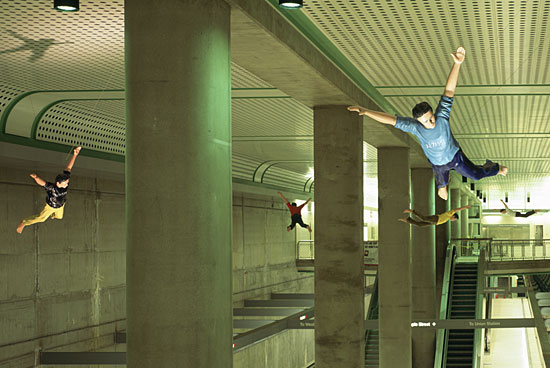
Jonathan Borofsky’s “I Dreamed I Could Fly” is an iconic—though hard to clean—part of the Civic Center Station.
Public art and public transit come together in the following gallery. All images courtesy Metro.
Posted 4/11/13
Puppets come out to play in L.A.
April 4, 2013
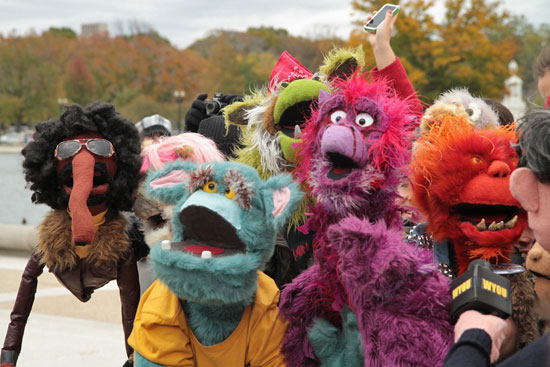
The "Million Puppet March" in Washington had a goal of saving PBS funding. Only fun is on the agenda for L.A. Puppet Fest.
Stretching their wooden arms, the sleeping puppets of Los Angeles are ready to take center stage.
The puppetry community is full of characters—and not just the wooden or fuzzy varieties. From old-school marionettists to modern dramatists who manipulate 10-foot monstrosities in teams of three, they’re as diverse as the city they live in.
Last September, Joe Smoke of the City of Los Angeles Department of Cultural Affairs approached Maria Bodmann, an expert in the thousand-year-old art of Balinese shadow puppetry. Together, they pulled a few strings and organized a meeting of L.A. puppeteers with the goal of producing a citywide festival. This month, their plans will come to life at the inaugural L.A. Puppet Fest.
Bodmann hopes the festival will expose people to the many varieties of puppetry.
“People think fuzzy things with eyeballs, but that’s just one little bit of puppetry,” Bodmann said. “There are other types that address issues that aren’t really for kids. The stuff I do is connected to religious rituals. I can’t really do it for birthday parties.”
Pre-festival activities have already begun. From Thursday through Saturday, Rogue Theaters presents “Songs of Bilitis,” a mature audiences-only puppet rendition of the French erotic novel by Pierre Louÿs. The official opening takes place Sunday, April 7, at the Skirball Cultural Center and will feature puppet-making, performances and storytelling. After that, there will be performances by the Bob Baker Marionette Theater, a lecture on puppet history and puppet films and classes. The festival wraps up on April 28 with “L.A.’s largest-ever puppet parade” and closing ceremony at the Third Street Promenade in Santa Monica. See the website for a full schedule of events.
Michael Earl, a co-founder of the Puppet School who had a turn playing “Mr. Snuffleupagus” on Sesame Street a few decades back, said professional puppeteers have been through tough times in recent years.
“When Jim Henson was alive, there was a lot of puppetry happening; they had to train more puppeteers because there were not enough,” Earl said. “Then, 3D animation was invented and it slowly started to replace puppetry jobs.”
But Earl and his contemporaries see puppets making a comeback, due partly to the success of live stage productions like The Lion King and popular box office offerings including Where the Wild Things Are and 2011’s The Muppets.
Cue the L.A. Puppet Fest, which is being called L.A.’s first-ever citywide puppet festival—a description reached amid controversy.
“There is inter-puppet genre conflict,” said Michael Bellavia, who is organizing the puppet parade and closing ceremony. “The puppet geeks, they got all up in arms when this was billed as the first puppet festival.”
Accounts vary. Some point out smaller-scale annual events by the Los Angeles Guild of Puppetry. Alan Cook, co-founder of the guild and curator of the International Puppetry Museum in Pasadena, is a revered patriarch of the puppetry community. He recalls a major, national festival held at UCLA back in 1957. Recorded puppet history in Los Angeles dates back at least 100 years, he said. Worldwide, forms of puppetry go back millennia and represent some of the most respected cultural art forms.
The guild’s current president, Christine Papalexis, said contention among puppeteers is common because they’re artists.
Despite their differences on the minutiae, everyone agrees the festival should be as inclusive as possible. They’re united by a love of puppetry that, for many, began with their first toy puppet in early childhood.
That inclusivity extends to the audience, who will be invited to make their own puppets and learn puppetry skills at some of the events. The L.A. Puppet Fest Parade, for example, will have a puppet-making station on site, and organizers say it’s fine if people just want to draw eyes and a mouth on their hands.
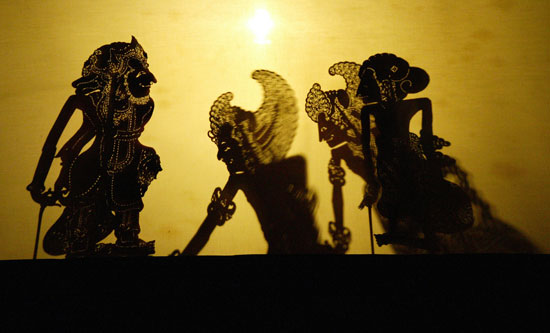
Carved rawhide shadow puppets act out a scene involving the heroic Pandawa brothers of the Mahabharata, a Sanskrit epic from ancient India.
Posted 4/4/13
These co-workers go the distance
March 21, 2013
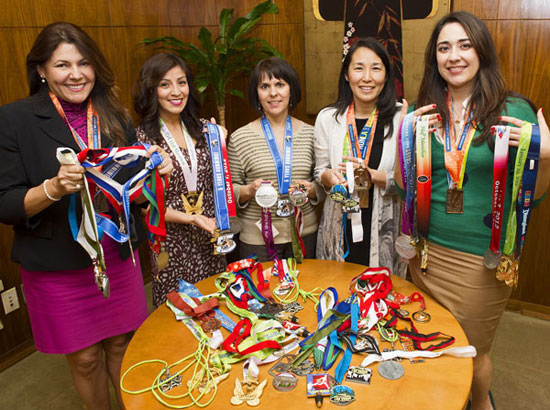
Showing off the hardware. From left, Ernestina Rhind, Salene Giron, Maria Duron, Sachi Hamai and Avianna Uribe.
Among the thousands of runners at the start of the L.A. Marathon in 2011 was a nervous but excited band of sisters. It was their first marathon, and at their side was their “mother hen,” veteran runner Sachi Hamai, more commonly known by her official title—executive officer of the Los Angeles County Board of Supervisors.
Three of the women were on Hamai’s staff. The fourth worked for Supervisor Gloria Molina. For months, Hamai would lead them on pre-dawn runs of gradually increasing distances. Before they’d even hit the streets, she’d drive the route and strategically stash water bottles so the women wouldn’t have to carry them.
After one of their sessions edged above 13 miles, Hamai, who oversees the Board of Supervisors’ agenda, came clean with an agenda of her own. “We’re going to do a marathon,” she decreed. At the close of those morning training sessions, she began urging them to visualize what it would be like to cross the finish line into the joyous and proud embrace of family and friends
Hamai was so persistent that before the starting gun was fired on the morning of the 2011 marathon, Maria Duron of the executive office remembers thinking: “What am I doing here? Did I ever say yes?” In the end, she’s forever grateful she never said no. “When we started training, I couldn’t even run a mile,” she says. “When we finished, I said, ‘We did it!’”
All five women did, in fact, finish the race, one of the most grueling in L.A. Marathon history, with rain coming down so hard that the streets were sometimes shin-deep in cold water. “I felt so horrible,” Hamai recalls. “I thought they’d never run with me again.”
She was happily wrong. Since then, the co-workers have logged countless more miles together in a ritual that the women say has created not only strong bodies, but strong bonds. “There’s a lot of chatter during our runs, but it’s not about work,” says Hamai, whose running shoes are always within arm’s reach, even when she’s at her desk. “We listen to each other about our personal lives. We push each other. If one of us says, ‘Let’s just get some coffee this morning,’ someone else will say, ‘Let’s get it after the run.’ ”
Come Sunday, 26,000 runners will once again lace up for the L.A. Marathon, a 26.2 mile journey of sweat and blisters from Dodger Stadium to Santa Monica. This time, though, the coach will be on the sidelines. “My mind is willing but my body isn’t,” Hamai says. Instead, she’ll be rooting for the sole member of the team to brave this year’s race—Avianna Uribe, operations director for Molina. “They’ll be there in spirit,” Uribe says of her training partners in the board’s executive office.
Still, Uribe will have company from a few other county colleagues along the route, including Ryan Alsop, assistant chief executive officer for intergovernmental and external affairs. This will be his fifth L.A. Marathon. But unlike the county women, he runs solo. “I’m an intense trainer and I like to be in my own head,” says the 42-year-old Alsop, whose fastest marathon time is 3 hours and 16 minutes. Although the fleet-footed exec will be running alone—heavy metal music pulsing through his ear buds—he says he’ll be joined at the starting line by a first-timer, the county’s Sacramento lobbyist, Alan Fernandes, whom Alsop convinced to give it a shot.
Fernandes, a long time cyclist and modest runner, says he thought the L.A. Marathon would be a perfect way to get a street-level view of the county he represents. “I’m using it as a sightseeing tour,” says the Northern California native. Fernandes is hoping he’ll be able to make that tour all the way from stadium to sea. His longest training run a few weeks back was 20 miles, he says, and that one “really kicked my butt. Going another six miles is going to be pretty tough stuff.”
“I’m kind of nervous,” he admits, “but I’m going to try to be calm.”
Meanwhile, Hamai is going to try to stay optimistic about her future on the roads. “It’s sad because I almost feel like I might not be able to run that far again,” she says. Last year, she and Uribe ran two marathons—Los Angeles and Chicago—and a dozen half-marathons, all of which took a toll on her body. “I just need to back off,” she says.
But, apparently, not for too long.
The other morning, Hamai and her business-attired running crew—Uribe, Duron, Salene Giron and Ernestina Rhind—gathered in her office in the Hall of Administration to display their bounty of gleaming race medals for a county photographer. Hamai noted that the sign-up for the St. George Marathon in Utah—where she ran her first marathon in 1997—was beginning on April 1.
“You can bet I’ll be trying to get into that one,” she said, and then added with a sly smile: “And I’m going to get the other girls to sign-up, too.”
(To watch the race, consider taking Metro, which has nine stations along the course. And if you’re driving, watch out for street closures.)
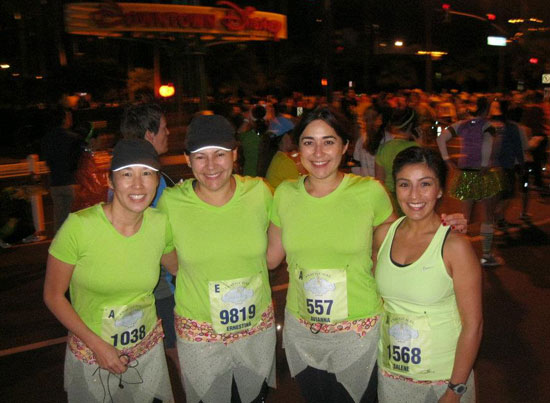
In their matching Tinker Bell costumes for a half-marathon at Disneyland, from left: Hamai, Rhind, Uribe and Giron.
Updated: Avianna Uribe and Ryan Alsop finished the marathon in fine form. But Alan Fernandes, after months of training, was unable to make the trip to L.A. from Sacramento because he was sick. Hats off also to two other marathon finishers from the county workforce: Andrew Veis, assistant press deputy to Supervisor Don Knabe, and Mark Pestrella of the Department of Public Works.
A legacy of California gold
January 10, 2013
The obituaries told us that he’d been a fixture on local television since the early 1980s, but I could have sworn that Huell Howser had been a part of our family for a lifetime. It felt like I’d been a fan of his for that long. When Huell generously agreed to preside over my swearing-in as a newly-minted County Supervisor in 1994, it was one of the high points of my political career.
Huell came from sturdy American stock. He was born in Gallatin, Tennessee, established in 1802 as the county seat of Sumner County and named for Albert Gallatin, a Secretary of the Treasury under Presidents Thomas Jefferson and James Madison. Maybe it was that kind of rich history and sense of place you find in so many Southern towns that helped develop this country boy into the gifted storyteller that enchanted the city slickers here in Los Angeles for so many years.
Huell and I shared a deep fascination with history in our college studies, and he earned his undergraduate degree in it from the University of Tennessee in Knoxville. After a stint in the Marine Corps and serving on the staff of Sen. Howard Baker—one of my Watergate heroes—he embarked on a career in TV news, working locally in Nashville before graduating to New York.
In 1981, he came to Los Angeles as a feature reporter for KCBS-TV, but soon found that the hustle of local TV news and its obsession with crime and celebrity fluff wasn’t his thing. In 1985, he found a happier home at KCET, then the Southern California flagship station for PBS. There he created a wide variety of feature programs like Videolog, California’s Gold and others, and finally hit his stride as a joyful chronicler of all things California, from quirky people and offbeat occupations to spectacular natural wonders and all manner of outdoor adventures.
With his shades, Hawaiian shirts, shorts or khakis, he was like a slightly goofy tour guide for a statewide vacation that never ended. There was nowhere he wouldn’t go, nobody he wouldn’t talk to. He was always friendly, cheerful, courteous and somehow incredibly interested and excited to learn about the most obscure places, occupations or activities.
Everything was “amazing” to Huell—“Oh, my gosh! Would you look at that!” he would always exclaim. It’s been said many times, but I honestly think it was Huell’s sense of innocence and wonder that was the key to his enduring and universal appeal. It wasn’t an act. There was nothing cynical, ironic or post-modern about it. This wasn’t the “Daily Show.” Off-camera—and I know, since we were friends and practically neighbors when he was staying at the grand old El Royale Apartments on Rossmore—he was exactly the same earnest and charming guy that you saw on screen.
Huell may have been born in Tennessee, near the cradle of the Confederacy, but he became by choice an adopted son of the Golden West. Maybe that’s why he had so much respect and admiration for the wonderful things too many of us native Californians take for granted.
It was easy to make fun of his folksy, “gee-whiz” manner, but you just had to spend five minutes with him to know that it was no put-on. His segments were just as honest and straightforward, strictly do-it-yourself productions—Huell and a camera guy, basically—but who needed all the other bells and whistles? The classic storytellers of ancient times required only a campfire, an audience, and a story to tell.
Though he became a genuine TV star, he never lost his modesty or humility. As he was winding down his career, he donated his tapes, books, and even his spectacular Volcano House home in the desert to Chapman University. Nearing the end, he instructed his colleagues that he wanted no ceremony or memorial, public or private, and he asked close friends to honor his wishes that they not participate. He just wanted people to watch his shows and enjoy the stories. That’s the only tribute he wanted.
When we first learned of his retirement in November, we hoped to honor him at the Board of Supervisors. We couldn’t have known at that time that he was already too ill to participate.
Now he’s gone, and it feels like we’ve all lost a cherished friend. So let me just say: “Happy trails, Huell.” You’ve left behind a wonderful legacy.
Posted 1/10/13
Have they got a deal for you
September 27, 2012
Sure, you could sit around and mope all weekend, fretting about the 53-hour closure of the 405 Freeway.
Or you could come out of Carmageddon II with a free bagel, a discounted letterman jacket and some newfound pole dancing skills.
Already feeling separation anxiety from your car? A complimentary 15-minute chair massage from Physical Therapy Solutions could help you cope. Fear of driving in a post-Carmageddon world? Hypnosis might work, and the price of the first session is 50% off at Scripting Your LifePlay.
As Los Angeles prepares to confront a second Carmageddon weekend on Sept. 29-30, the discounts, freebies and special offers are flying. Many neighborhood businesses are hoping for a boost from local customers sticking close to home for the weekend, as well as from those ditching their cars in favor of public transportation to get to attractions and services throughout the region.
Metro, which along with Caltrans is responsible for the massive 405 improvements project that includes Carmageddon II, has been working feverishly to turn the lemon of a lengthy freeway closure into some sweet, bargain-hunting lemonade.
An unprecedented expansion of the agency’s 10-year-old Destination Discounts program has brought hundreds of businesses into a special Carmageddon-themed initiative, complete with interactive map.
“To just say to people ‘eat/shop/play locally’ is not enough. It needed to have legs, it needed to have incentives attached to make it real, to make it viable,” said Fran Curbello, the Metro communications manager heading up the initiative. “We gave our business community a chance to be part of the solution.”
While some of the deals require presentation of a Metro TAP card, other businesses are extending their discounts and freebies to all comers this weekend—no questions asked.
At Select Beer Store in Redondo Beach, for instance, customers can just say “Carmageddon” to claim a free bag of chips as they order a brew (while supplies last!)
Although Metro’s primary objective is to get people riding public transit, it also has an interest in helping folks find diversions close to home this weekend. Curbello suspects that most merchants won’t particularly care whether their customers arrive by bus, bike or (gasp) automobile, as long they’re staying in the neighborhood—and away from the 405 construction zone.
“It’s good business,” she said.
The participants range from mom-and-pop eateries to big hotels and major museums. The Los Angeles County Museum of Art, for example, is offering ½ price admission to everyone who comes “via an alternate mode of transportation.” At another point on the artistic spectrum, Madame Tussauds Hollywood is having some fun with numbers and offering a 40.5% discount (get it?) on adult and children’s tickets. (Enter promo code 4050 if ordering online.)
Even for armchair bargain-hunters, Metro’s interactive Eat/Shop/Play map is worth a few clicks, just to marvel at the idiosyncratic glories of Los Angeles itself as it goes on sale for the weekend.
There are traveling notaries (J Lawson Mobile Notary of North Hollywood) and educators who make house calls (Tutor Doctor of Van Nuys.) There are horses to ride at the Sunset Ranch near the Hollywood sign and Segways for hire in the South Bay. Xtreme Martial Arts is offering discounts in North Hollywood and Rise-The Studio in Santa Monica is pushing 25% off all its “meditative and playful pole dancing classes” on Sept. 29 and 30.
Then there’s the food. Lots of it.
Most of the participating restaurants are offering discounts, but many are throwing in freebies.
“I’m ready to give away some hot links, that’s what I’m gonna do,” said Kevin Huling, owner of Les Sisters Southern Kitchen in Chatsworth, who’s hoping the new Orange Line extension will help bring customers his way. “I am hoping more people come down here. It’s a bit of a walk, but we’re walking distance from the Chatsworth Station.”
The moveable feast also includes free naan bread at Saffron in the Baldwin Hills Crenshaw Plaza, an on-the-house bagel for transit riders at the Onegeneration booth at the Encino Farmers Market, and a free side dish or beverage at Mel’s Fish Shack on West Jefferson, near the Expo Line’s Farmdale Station.
Those seeking a more lasting souvenir of Carmageddon II might consider making an automotive style statement with tire rims from EZ Rims 4 Rent on Crenshaw Boulevard. For this weekend, they’re offering $50 off purchase and rent-to-own transactions.
“Hopefully it does pretty well,” manager Fidel Ozuna said. “We are anticipating a pretty decent weekend.”
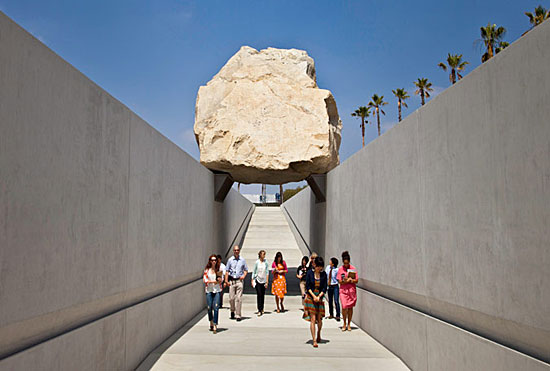
Have you seen The Rock yet? LACMA's half price this weekend if you get there via alternate transportation.
Posted 9/27/12
County property values inch up
September 11, 2012
It’s the $1.079 trillion question: what’s going on with property values in Los Angeles County?
A new report from the Assessor’s Office says they’ve gone up, modestly, for the second straight year in most of the county.
From the perspective of local governments, this year’s 2.2% net increase in the county’s trillion-dollar-plus property roll means more property tax revenues coming in to support services. It’s a positive sign after several years of major declines threw cold water on what was one of the country’s hottest real estate markets.
The city of Los Angeles, for example, where property values went up 2.5%, stands to receive an additional $110 million or so, said Assessor’s spokesman Louis R. Reyes.
Most municipalities across the county are in the plus column this year, led by Beverly Hills (6.5%), Rolling Hills (6%), Bradbury (5%) and San Marino (4.9%), with Arcadia, Monterey Park, Santa Monica, Manhattan Beach, La Canada Flintridge and South Pasadena rounding out the Top 10.
Only seven areas experienced drops in assessed property values. They are: Bell (-2%), Westlake Village (-2%), Lancaster (-1.2%), Santa Clarita (-0.9%), Hidden Hills (-0.8%), Palmdale (-0.6%) and Carson (-0.1%).
(Read the full report here. Community-by-community listings begin on page 14.)
Despite the uptick in real estate values in most parts of the county, it’s not all good news. Some 406,000 property owners received “decline in value” assessments in 2012, more than the 393,000 reductions in 2011 but fewer than the peak of 426,000 in 2010.
Foreclosures are still high—30,000 in 2011. That’s down considerably from the 41,300 foreclosures in 2008 but sharply up from the 2,000 recorded in 2005.
And median prices for single family homes in the county stand at $305,000, well below the $510,000 median reported in 2006.
Posted 9/10/12




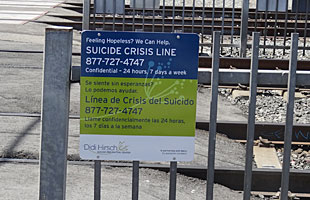
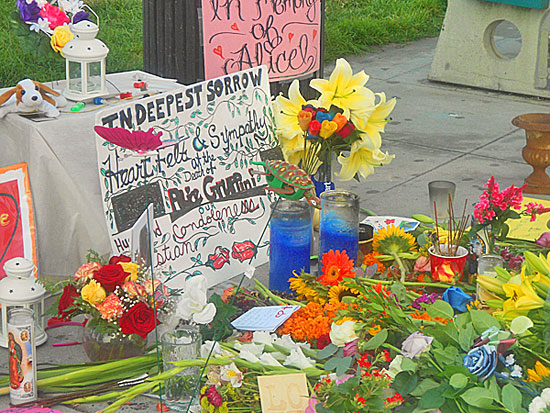
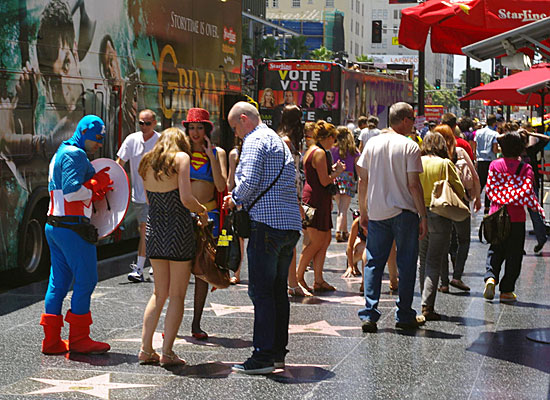
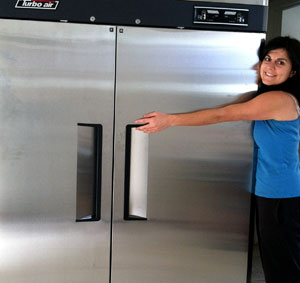


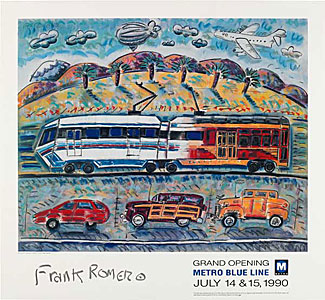











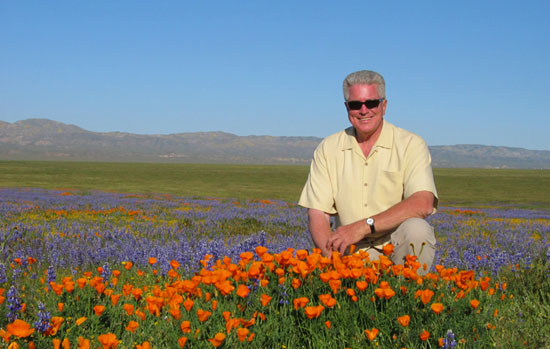
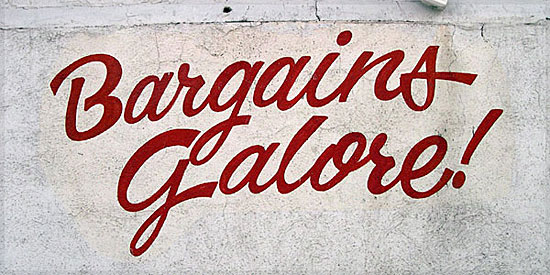

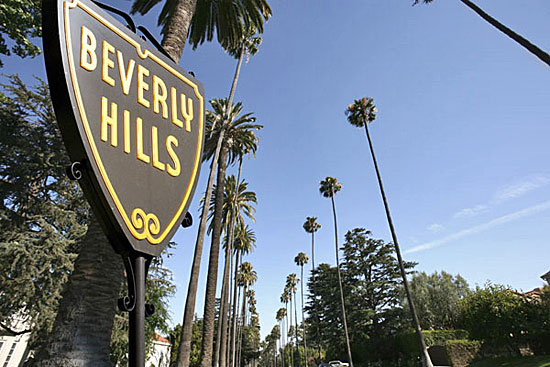







 405 bridge work causes a stink
405 bridge work causes a stink

